Natural Paving 2017
The New Brochure season continues with this week's submission courtesy of Doncaster based Natural Paving (NP). Traditionally having both feet and at least one arm very firmly planted in the imported natural stone sector, that restrictive remit has loosened somewhat of late and we've seen non-stone paving added to their range over recent years.
What have they got for us in 2017?
Well, for the brochure itself, they've stuck with the same square format, neither Portrait (waning in popularity) nor Landscape (nearly everyone seems to be heading that way!), and more or less the same layout as last year , but now running to a very weighty 156 pages (including covers).
An introduction page picks out what they hope will grab our attention this season. What they refer to as 'Dark Landscaping Products' (shades of Harold Potter, perhaps) has been beefed-up with the addition of "black" walling, block paving, and slate flagstones. The porcelain range, Vitripiazza , has been massively expanded, and there's a new range of incorrectly titled "cobblestones" (they mean setts), a replacement clay paver and.....err....some plastic grass?!?!

Better have a closer look, I suppose.
Is there any clearer sign of how the buying choices of a certain section of the British public have changed than the promotion of NP's previous side-line in porcelain paving to a new role as the leading section? It's leap-frogged right over NP's former stock-in-trade of imported natural stones and now commands a full 16 pages, all under the single Vitripiazza sub-brand.
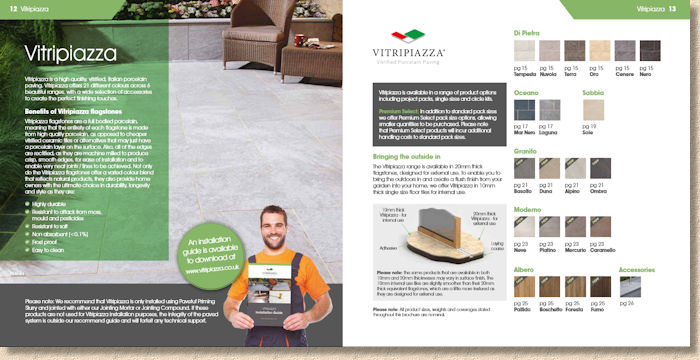
There are now twenty-one different colour options across six ranges, three of which are new to us: Granito is, unsuprisingly, granite-like; Moderno is a lightly textured range that is said to be 'economical'; and Albera offers four shades of a wood-effect finish. All of the six ranges are based on a 600x600mm tile at the now standard 20mm thickness, although three of the ranges ( Di Pietro , Sabbia and Granito) offer a three-size modular Project Pack. The established Di Pietro range has, for 2017, added what they are calling a Linear Project Pack with 1200/600/300 x 600mm pieces plus a 1200x600mm Mega-Tile available singly. Timber-styled Albera has a 1200x300mm 'plank-a-like' option, again available singly.
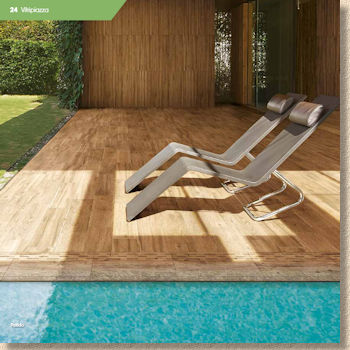
Porcelain paving is now firmly established (mostly in Lower Britain, it has to be said), but no clear 'leading brand' has yet emerged, so choice comes down to aesthetic taste, quality and price. Feedback to date suggests the Vitripiazza is reasonably well-received but there doesn't seem to be any sense of brand loyalty. Contractors are still relying on all the leading suppliers being much-of-a-muchness and letting clients choose whichever the like. Can NP, with this expanded range, make a start on creating a brand which engenders that all-important loyalty?
While these ceramic tiles offer all sorts of benefits in terms of durability and low-maintenance, they aren't for every project and there are still far too many reports of incorrect installation. Maybe increased sales will help spread the knowledge about just how they should be laid and, hopefully, we'll see fewer eejits cocking it up.
The following three sections of the brochure all deal with the standard fare for NP: natural stone flags, and maybe because all the company's energies have gone into SETTS, clay pavers and....errr....placky grass, there is abso-bloody-lutely nothing new in either the PremiaStone, CragStone or ClassicStone ranges.
This strikes me as odd. A company literally built around natural stone that has nothing at all new to offer? Is that over-confidence in their existing range or lack of enthusiasm given the inexorable rise of porcelain? Either way, it's worrying.
Every other paving supplier of note has *something* new to offer for 2017, so how can a supplier rooted in natural stone, a distributor which boasts of its own factories in India and dedicates a double-page spread to its own, in-house, 'Stone Standard' have nothing new to show? Even those national suppliers with a background based in the world of concrete paving have managed to offer one or two newbies in the stone paving sector, even if said newbies might not have the legs to make it through to 2018.
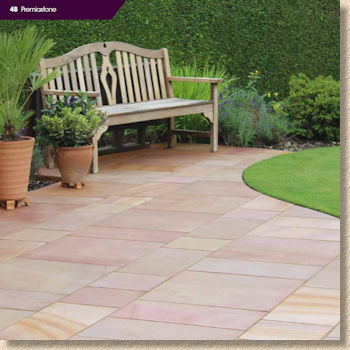
Oh well. Maybe they are planning a big surprise for next year? At least there's a token newcomer in the oft-overlooked stone paver section, FosseStone .
Ebony is a rumbled black limestone, with sawn sides, a calibrated base and a riven head. Black limestone. I know! One of the more troublesome stone products. Is this the same black limestone that bleaches to steel grey almost overnight when exposed to sunlight? The on-page blurb doesn't reveal its origin, but close examination of the photographs suggest that it is the fey and faint variety, so, warn your clients in advance that it won't be carbon black for long and take a look at the page on this website about suitable colour-enhancing sealants.
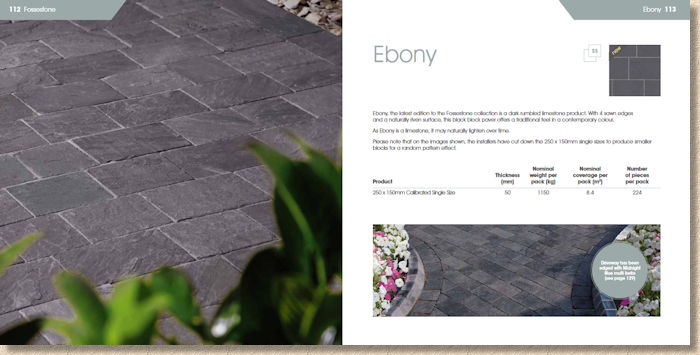
In contrast to the sparseness of innovation in flagstones, the next section, Baksteen Clay Pavers is all new, every last part of it, or so it seems. Previously, the clay pavers supplied via NP were provided via Belgium's Vande Moortel, but perhaps that arrangement has come to an end only to be replaced by a whole new range is being provided by some faceless entity known only as Baksteen, who, like the Vitripiazza Porcelain, seem to have become part of a group offer centred around NP's natural stone.
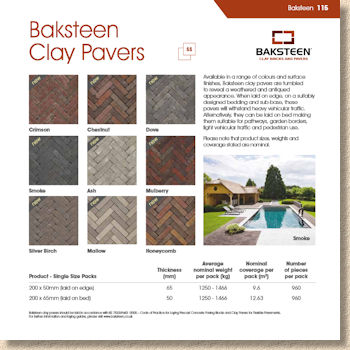
Baksteen, which is basically Dutch/Flemish for "Brick", looks uncannily similar to the Vande Moortel offering, only with different colour names. The bricks themselves are Brit-friendly 200x65x50mm clays. Some are pristine, some are tumbled, and they come in a range of nine colours highly reminiscent of what we once referred to as the Low Countries, so lots of muddy reds, browns, buff and greys. The sizes are distinct from the very European sizes of the previous range, so maybe it is a new manufacturer.
There has always been an air of sympatico between clay paviors and natural stone, so the provision of clays within a natural stone collection makes a lot of sense, and this new range with its modular sizes will surely blend well with the rest of the NP range. I haven't seen any samples or projects just yet, so I can't really comment on the consistency of colour or generosity of texture, but there's no reason to think they would be significantly different to what went before. I'll be asking my local NP stockist whether they'll be getting any into stock.
The next section of the brochure labours under the misnomer of 'Cobblestones' . I don't know how many times over the years I've had to explain over and over and over again that dressed rectangles/cubes of natural stone are setts, not cobbles. Cobbles are (and you can check this in the British/European Standards ) undressed stone of irregular dimensions. I know the general public refer to them as cobbles, but why should we pander to ignorance? They ain't cobbles: they're setts!
So, while much of the range is familiar, the one newcomer is the so-called European Cobble . These seem to be cubes of dressed stone (see above) cut to fixed plan sizes but having variable thicknesses, which will not help the unfamiliar installer. I'm not sure why the plan sizes are stated so accurately (100/140/200mm) whereas the thicknesses are given with a ±10mm range, so 30-50mm or 70-90mm, for example. That's strange: those of us familiar with sett laying are used to working with setts and cubes with generous tolerances on all three dimensions, but to be so keenly accurate on two and lax on a third makes no real sense.

Three colours, Lakeland (buttery buff), Promenade (silver buff) and Chocolate (reddy brown) which are illustrated by the tiniest of swatches, and a solo big photie of a street in deep shadow so almost no detail can be discerned. Not the best way to promote a new product, and so lacking in information that most customers will be inclined to skip and look elsewhere.
Walling and Accessories remain, as far as I can tell, unchanged, which I would normally pass unremarked, but combined with the absence of anything new (of significance) in the rest of the natural stone range, makes me wonder just what the thinking has been. Very strange!
The PaveTuf range seems to grow almost without mention and now includes squeegees and diamond blades. There are two confusing resinous jointing products: one a 'mortar', the other a 'compound' and no clear-cut explanation of why. Describing what I suspect is the two-component product as needing two operatives for installation is either errant nonsense or the stuff is so damned hard to work it might be better to avoid kit completely.
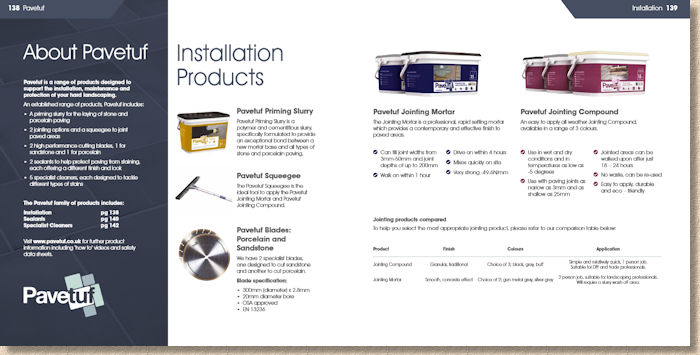
Similarly, a deep cleaner which is claimed not to damage surfaces sealed with PaveTuf sealant does not inspire confidence. Is it safe on untreated surfaces? On surfaces treated with other brands of sealant? This is precisely the sort of information that should be provided by a brochure.
The final new section is another head scratcher. I know that artificial grass is increasingly popular – I even had it installed as a replacement for a heavily shaded tiny lawn in my own garden – but is it a natural fit for a brochure that is (was?) focused on hard landscaping?
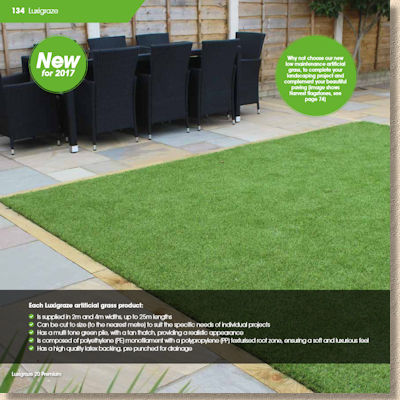
Lazigraze is a range of artificial lawn products complete with adhesives, jointing tapes, fastening pins and cleaners. There are four 'grades', if that's the correct term, with varying pile height but no explanation (in the brochure, at least) of the pros and cons of each. The tiny swatches offer no real guidance, and the supporting table lists qualities that mean less than buggerall to most readers. It may well be a superb product but there is no way whatsoever of coming to that conclusion based on what's in these four pages.
If the business plan for NP is now to be a comprehensive supplier of all landscape covering materials, then placky grass makes sense, but then, how long before they start selling concrete paving?
And having dragged my sorry arse around far too many landscape exhibitions over the last two years, I can say with some confidence that one of the most competitive and over-crowded markets just now is placky grass. There are dozens of suppliers, and more worryingly, there are several well-funded companies specialising in it and producing very, VERY good products. Why take on a product that will either have to be exceptional to sell in any quantity, or will have to be priced at the sort of level that makes it attractive primarily to the less discerning customer?
So that's the content, such as it is, what about the brochure itself? Well, to be honest, not much has changed since last year in terms of style, format and layout, and, continuing in that vein of honesty, there's nowt wrong with that. It works well, with a full-page photie of the key product counterbalanced by a page of swatches, explanatory text and technical information. It's not too crowded, not too empty. As Goldilocks discovered with regard to Little Bear's porridge, it's just about right.
By and large, the photography is better than ever. Most of the outdoor shots were taken on overcast days, which helps prevent the paving colours and textures being bleached by strong sunlight, albeit at the cost of relegating the background greenery to near insignificance. The styling is fairly good and well-judged, having attractive properties complementing the hardscapes without ever dominating or detracting. The studio shots are well-lit and cleverly staged to evoke a real sense of being outdoors. It's a most attractive brochure and has become ever more comprehensive.
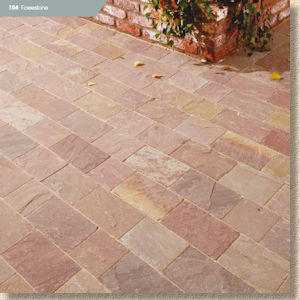
Over the years, Natural Paving have built their brand on not being concrete paving. At times, the denigration of concrete paving plunged to Jurassic depths – Yes: I'm thinking about the giant inflatable dinosaur that once adorned their display stand – but as the paving market has matured, it's become ever harder to rely solely on what you're not, and you have to start extolling just what it is that you are.
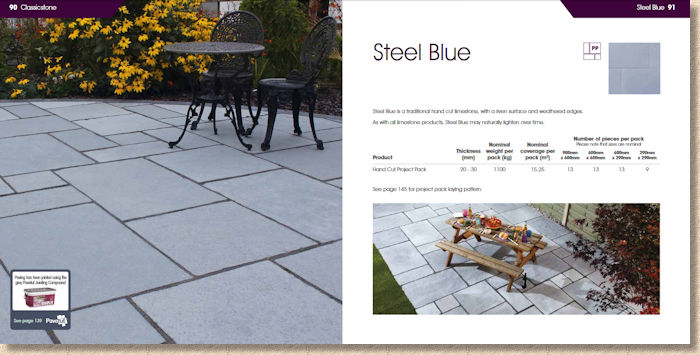
The emergence of definite sub-brands beneath the logo of a vague and indefinite Talasey Group, an entity in existence for only a couple of months at the time of writing, suggests a re-focussing of NP's market model. Maybe the plan is to provide all these various sub-brands, the Vitripiazza, the Baksteen, Pavetuf, Lazigraze and, of course, Natural Paving itself, with a route to market that will allow them to strengthen their individual positions and perceptions.
Regardless, for the discerning patio or driveway customer, for the more clued-up contractor, and for the innovative garden designer, the Natural Paving 2017 brochure will provide much to consider, and even more to inspire. Forget the whys and wherefores that seem to have dominated this review, they are for the navel-gazers and anoraks amongst us. What really matters is what Natural Paving can offer you for your project, and it's safe to say that what they show in this brochure, and how it is shown, is pretty darned good.
Natural Paving: 0845 072 1150 or 0330 333 8030
Click here to download brochure

